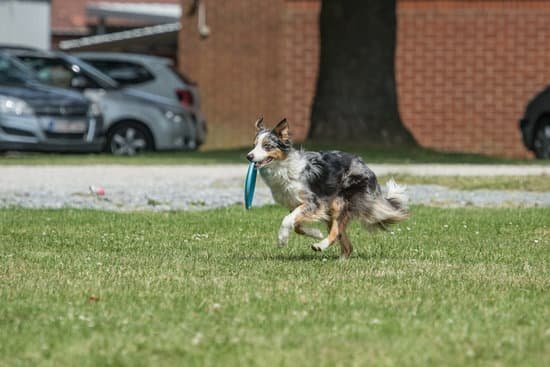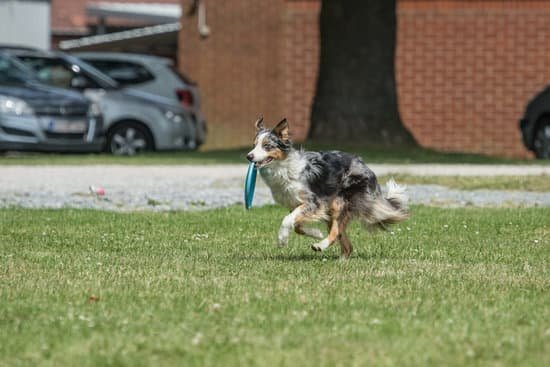Training a dog to listen is a crucial aspect of responsible pet ownership. Whether you have a brand new puppy or an older dog, proper training can create a harmonious relationship between you and your furry companion. From teaching basic commands to addressing common challenges, effective communication is key in ensuring your dog’s safety and well-being.
When it comes to training your canine friend, patience, consistency, and positive reinforcement are essential elements. By understanding the importance of establishing clear communication with your dog, you can set the foundation for successful training. This article will explore the basics of dog training, different training methods, creating a training schedule, teaching basic commands, addressing common challenges, advanced techniques, reinforcing good behavior, and training for specific situations.
Through this comprehensive guide on how to train a dog to listen, you will gain valuable insights into building trust and enhancing the bond with your four-legged friend. With the right approach and dedication, you can develop your dog’s listening skills and create a well-behaved companion for years to come. So let’s dive into the world of canine training and unlock the secrets to effective communication with your beloved pet.
The Basics of Dog Training
Training a dog to listen is crucial for their safety and well-being, as well as for promoting a harmonious relationship between the pet and owner. The basics of dog training lay the foundation for successful communication and understanding between you and your furry companion. Consistency, patience, and positive reinforcement are key elements in ensuring effective training sessions.
Establishing a Positive Relationship
Building a strong bond with your dog is essential before starting any training regimen. This creates trust and respect between the two of you, making it easier for your dog to follow your commands. Spending quality time with your dog through play, walks, and bonding activities will strengthen your relationship and encourage a willingness to learn.
Setting Clear Expectations
Consistency in setting clear expectations for your dog is crucial during training sessions. Use simple commands that are easy for your pet to understand, such as “sit,” “stay,” or “come.” Be patient and repeat these commands consistently until they become familiar with the words and associated actions. Remember to always use positive reinforcement, such as treats or praise, when your dog responds correctly to a command.
Creating a Positive Environment
Creating a positive environment during training sessions is essential for promoting learning and listening skills in your dog. Eliminate distractions that may interfere with the training process, such as loud noises or other pets. Find a quiet space where you can focus on teaching your dog new commands without any interruptions. Additionally, keep training sessions short and fun to prevent boredom or frustration for both you and your pet.
By establishing a strong foundation through these basic training principles, you can effectively teach your dog to listen and respond to commands in various situations. Consistency, positive reinforcement, and patience are key components in successfully training a dog to listen attentively.
Choosing the Right Training Method
Training a dog to listen is crucial for the well-being of both the pet and its owner. It not only ensures a harmonious relationship between the two but also promotes safety and allows for better communication. One of the key elements in training a dog to listen is choosing the right training method. When it comes to this aspect, there are two primary approaches: positive reinforcement and punishment-based techniques.
Positive Reinforcement
Positive reinforcement involves rewarding your dog for exhibiting the desired behavior. This can be done through treats, praise, toys, or any other form of positive reinforcement that motivates your pet. The idea behind positive reinforcement is to create an association between good behavior and something pleasant, thereby encouraging the dog to repeat that behavior in the future.
Punishment-Based Techniques
On the other hand, punishment-based techniques involve correcting unwanted behavior through aversive methods such as yelling, physical corrections, or using tools like shock collars. While these techniques may suppress undesirable behaviors temporarily, they can have long-term negative effects on the dog’s well-being and trust in their owner. It is generally recommended to avoid punishment-based techniques and focus on positive reinforcement instead for effective and humane training.
In deciding which training method to use, it is important to consider your dog’s individual temperament, learning style, and any specific behavioral issues they may have. Ultimately, positive reinforcement has been proven to be more effective in promoting long-lasting behavior changes while also strengthening the bond between you and your furry companion.
By understanding these two approaches and their impact on your dog’s training journey, you can make an informed decision on how to train a dog to listen effectively.
Creating a Training Schedule
Training a dog to listen is a crucial aspect of building a strong and positive relationship with your furry companion. Consistency is key when it comes to training, as dogs thrive on routine and clear expectations. By creating a training schedule, you can establish a structured framework that will help your dog understand what is expected of them and reinforce good behavior.
To effectively train a dog to listen, it is important to set aside dedicated time each day for training sessions. This will allow you to focus on specific commands or behaviors that you want to work on with your dog. Below are some tips on how to create a training schedule that promotes consistency and ultimately leads to success:
- Set realistic goals: Determine what behaviors or commands you want to focus on during each training session, keeping in mind your dog’s abilities and learning pace.
- Be consistent: Stick to the same time each day for training sessions to establish a routine that your dog can rely on.
- Keep sessions short and engaging: Dogs have short attention spans, so aim for brief but focused training sessions that keep your dog motivated and engaged.
Additionally, incorporating rewards such as treats or verbal praise during training sessions can help reinforce positive behavior and encourage your dog to listen attentively. Remember, patience and persistence are key when it comes to training a dog effectively.
- Keep track of progress: Monitor your dog’s improvement in listening skills over time, celebrating small victories along the way.
- Adjust the schedule as needed: Be flexible and willing to adapt the training schedule based on your dog’s response and progress.
- Seek professional guidance if needed: If you encounter challenges or have specific goals in mind, consider enlisting the help of a professional trainer who can provide personalized guidance and support.
Teaching Basic Commands
Teaching a dog basic commands is essential in training them to listen and respond to your instructions effectively. One of the fundamental commands that every dog should learn is “sit.” Teaching your dog to sit not only helps with obedience but also sets the groundwork for other commands.
To train your dog to sit, hold a treat close to their nose and move your hand up. As their head follows the treat, their bottom will naturally lower into a sitting position. Once they are sitting, praise them and give them the treat.
Another crucial command is “stay,” which can be challenging for some dogs as it requires patience and impulse control. To teach your dog to stay, start by having them sit. Then, with an open palm in front of their face, say “stay” while taking a step back. If they stay in place, reward them with a treat and praise. Gradually increase the distance between you and your dog while reinforcing the command to help them master staying put.
One of the most important commands for safety is “come.” Teaching your dog to come when called can potentially save their life in risky situations. Start indoors or in a quiet area with minimal distractions. Call your dog’s name followed by the command “come” in an enthusiastic tone. When they come to you, reward them generously with treats and affection. With consistent practice and positive reinforcement, your dog will learn how to come reliably when called regardless of distractions.
| Basic Commands | Training Tips |
|---|---|
| Sit | Use treats to lure into sitting position |
| Stay | Start small and gradually increase distance |
| Come | Practice in quiet areas and use positive reinforcement |
Addressing Common Training Challenges
Training a dog to listen can be a rewarding experience for both the pet and the owner. However, it is not without its challenges. One common hurdle that dog owners face is dealing with distractions during training sessions.
Dogs are naturally curious animals and may find it difficult to focus when there are tempting sights, sounds, or smells around them. To overcome this challenge, it is important to gradually introduce distractions during training, starting with mild ones and gradually increasing the level of difficulty as your dog becomes more proficient at listening.
Another common issue that dog owners encounter is stubborn behavior. Some dogs may be more resistant to training or may exhibit behaviors that seem defiant. When faced with stubborn behavior, patience is key.
It is important not to lose your temper or resort to punishment-based techniques, as this can damage the trust between you and your furry companion. Instead, try to understand why your dog is behaving in a certain way and address the underlying issue through positive reinforcement and consistent training.
In addition to distractions and stubborn behavior, another challenge that dog owners may face while training their pets is inconsistency in their own training methods. It is crucial to stick to a consistent training schedule and approach when teaching your dog to listen.
Dogs thrive on routine and repetition, so varying your methods or skipping training sessions can cause confusion for your pet. By establishing a regular training schedule and using positive reinforcement consistently, you can help your dog improve their listening skills over time.
Advanced Training Techniques
Training a dog to listen goes beyond just teaching basic commands like sit, stay, and come. Advanced training techniques are essential in building on these basic commands to improve your dog’s listening skills overall. By incorporating more complex exercises and challenges, you can help your furry friend become more focused, attentive, and responsive to your commands.
One effective advanced training technique is shaping behavior through successive approximations. This method involves breaking down the desired behavior into small steps and rewarding your dog for any progress towards the final goal. By gradually shaping the behavior you want, you can encourage your dog to actively think and problem solve, leading to better listening skills in the long run.
Another advanced technique is proofing commands in different environments and situations. Dogs learn based on associations, so it’s important to practice commands in various locations with different distractions present. This helps your dog generalize the command and understand that they should listen regardless of the circumstances. Consistency in training across different settings will reinforce good listening habits and make your dog more reliable in any situation.
To further enhance your dog’s listening skills, consider incorporating challenging activities like agility courses or nosework exercises into their training routine. These activities not only provide mental stimulation but also help strengthen the bond between you and your pet. By engaging in fun yet challenging tasks together, you can continue to build on the foundation of basic commands while improving your dog’s overall responsiveness and cooperation.
- Shaping behavior through successive approximations
- Proofing commands in different environments
- Incorporating challenging activities like agility courses
Reinforcing Good Behavior
Training a dog to listen is essential for building a strong and positive relationship with your furry companion. One of the most effective ways to encourage listening behavior in dogs is through the use of rewards and praise. Positive reinforcement has been proven to be much more effective in training dogs than punishment-based techniques, as it not only motivates them to learn but also helps strengthen the bond between you and your pet.
When using rewards to reinforce good behavior in your dog, it is important to find what motivates them the most. Whether it’s treats, toys, or verbal praise, make sure to choose a reward that your dog finds highly appealing. By consistently rewarding your dog when they follow commands or exhibit desired behavior, you are teaching them that listening results in positive outcomes, which encourages them to continue obeying your cues.
In addition to rewards, praise plays a crucial role in encouraging listening behavior in dogs. Verbal affirmations such as “good boy/girl” or “well done” can go a long way in reinforcing their understanding that they are doing the right thing.
Praise should always be given immediately after the desired behavior occurs to help establish a clear connection between their action and the positive reinforcement. By combining rewards and praise effectively, you can create a positive training environment that motivates your dog to listen attentively and respond promptly to your commands.
Training for Specific Situations
Training a dog to listen in various situations such as in public or around other pets is a crucial aspect of their overall training. It not only ensures their safety but also enhances their socialization skills and ability to respond appropriately to different environments. To achieve success in training for specific situations, it is essential to build on the foundation of basic commands and incorporate advanced techniques tailored to these scenarios.
One effective way to train a dog to listen in public settings is by gradually exposing them to different environments starting from less stimulating ones and gradually increasing the level of distractions. This process, known as desensitization, helps the dog become more comfortable and focused amidst various distractions, making it easier for them to follow commands even in busy or unfamiliar surroundings.
Another key aspect of training a dog to listen around other pets is teaching them proper social etiquette. This includes commands such as “leave it” or “stay” when encountering other animals to prevent conflict or overexcitement.
Positive reinforcement plays a significant role in this type of training, rewarding the dog for calm behavior or responding correctly amidst distractions. Consistency and patience are paramount when teaching a dog to listen in public or around other pets, as it may take time for them to generalize their training across different situations.
| Training Tips | Description |
|---|---|
| Desensitization | Gradually expose your dog to different environments with increasing distractions. |
| Social Etiquette | Teach commands like “leave it” or “stay” when encountering other pets. |
| Positive Reinforcement | Rewards and praise are essential for encouraging good behavior around other pets. |
Conclusion
Training a dog to listen is not just about teaching them basic commands, it is about building a strong bond and communication between you and your furry friend. By investing time and effort into training, you are not only ensuring their safety but also enhancing their overall well-being. A well-trained dog is a happy dog, as they feel secure in knowing what is expected of them.
Consistency is key when it comes to training a dog to listen. By using positive reinforcement techniques and creating a training schedule that fits both your lifestyle and your dog’s needs, you can set the foundation for successful training. Remember, every interaction with your dog is an opportunity for learning and reinforcing good behavior.
In conclusion, the rewards of successfully training a dog to listen are immeasurable. Watching your canine companion respond to your commands, engage in positive behaviors, and navigate through different situations with ease is truly fulfilling.
With patience, dedication, and the right approach, anyone can train their dog to be a respectful and attentive companion. So, take the time to understand your dog’s unique personality, choose the appropriate training method, and enjoy the journey of creating a strong bond based on trust and communication.
Frequently Asked Questions
How Do You Discipline a Dog That Won’t Listen?
Discipline a dog that won’t listen often involves consistency, positive reinforcement, and patience. Using clear commands, rewarding good behavior, and redirecting unwanted behaviors can help in training them effectively without resorting to punishment.
How Can I Teach My Dog to Listen?
Teaching a dog to listen requires time, effort, and understanding. Building a strong bond with your dog through regular training sessions, using treats as rewards, and practicing commands consistently can help improve their responsiveness and attentiveness.
Why Does My Dog Not Listen to Me?
A dog may not listen due to various reasons such as lack of training, distractions in the environment, fear or anxiety, health issues, or simply not understanding what is being asked of them. Identifying the underlying cause can help address the issue more effectively and improve communication with your pet.

Welcome to the blog! I am a professional dog trainer and have been working with dogs for many years. In this blog, I will be discussing various topics related to dog training, including tips, tricks, and advice. I hope you find this information helpful and informative. Thanks for reading!





